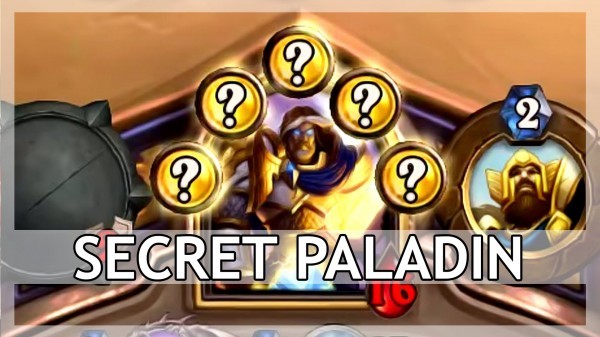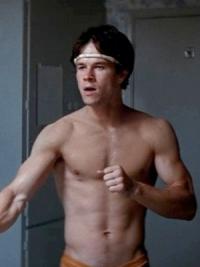A week after the nerfs to free up the meta, Hearthstone still mostly plays without the latest set.
Vicious Syndicate tracks the Hearthstone meta on a regular basis. They produce meta reports (the latest of which is here) that detail the classes and decks being played, from the highest level to the morass at the bottom. But it was a post on CompetitiveHS that made me sit up and take notice yesterday, since it demonstrated two things.
First off, this is probably the most diverse collection of genuinely competitive decks that the game has ever seen. That's a reason to celebrate, without question. Almost every class in the game has at least one competitive deck, if not several, and there are no dominant decks that mean you'll be seeing the same cards thrown down in front of you 3 out of every 5 times you play. That's awesome; full stop. But the other factor is this: most of those competitive decks play very few, if any, Witchwood cards.
Now, we've been here before. When The Grand Tournament was released almost three years ago, the card set had a very low impact on the game (with a couple notable exceptions.) The Joust mechanic was underwhelming and the cards, in general, simply didn't have the explosiveness or game-altering power of the Classic set, as well as Curse of Naxxramas and Goblins vs Gnomes; both of them notorious for having some of the most powerful cards the game has ever seen. However, this was still relatively early in the game's development and with subsequent sets and adventures, there have almost always been some transformative effects on decks and counter-decks, from Mechs to Old Gods to Quests and beyond. But that's not really the case at the moment.
Despite a variety of decks bursting forth since the shackles of Call to Arms and Possessed Lackey were thrown off, the vast majority of them are made up mostly of cards that existed pre-Witchwood. It's almost as if these nerfs could have taken place months ago (such as when people were calling for them after the release of Kobolds...) and the meta might have been something similar to what we have now for the past half year. The above-referenced post listed the common deck compositions for 19(!) different decks that are currently perceived to be Tier 1 or Tier 2. Four of them (Even Shaman, Shudderwock Shaman, Odd Rogue, Tempo Mage) had 4, 4, 3, and 3 Witchwood cards, respectively, in their most common lists. That's much less than you'd expect from a new set introducing enhancements to existing archetypes. Of course, two of them didn't even exist as archetypes before Witchwood's introduction of Genn Greymane and Baku Mooneater and a third was absent, as well, until the appearance of Shudderwock.
The argument here isn't that Witchwood didn't change the meta. Clearly, it did, since the long overdue nerf of Call to Arms was specifically aimed at a Witchwood deck (Even Paladin) that was dominating the meta alongside various flavors of Warlock. However, the funny thing about that new introduction to the meta is that Even Paladin often used ONLY Genn Greymane from the Witchwood set. A brand new, never before seen deck archetype and list based on one card. That's normally what you'd expect in a new set, similar to Journey to Un'Goro's Quests. But you'd also normally expect other cards that were introduced alongside those meta-changing ones to be played. Instead, the deck reached back to hallowed Arena standards like Amani Berzerker, which hadn't seen competitive play since the beta, but couldn't find space for any Witchwood cards other than the one that improved its hero power.
Of the remaining 8 Tier 1 decks in that post, all of them use 1 Witchwood card... or none. Of the remaining Tier 2 decks, none use more than 2 and the majority use 1 or 0. If one looks at it from the perspective of actual card slots, it can look a little better, in that 20% of Even Shaman (6 cards) are Witchwood cards, even if that means only 4 different cards in total. But no matter how you look at it, that's still a pretty stark indicator of the relative power level of the set. The switch from Mammoth to Raven was the largest removal of cards from Standard that the game has yet seen. We're at the smallest card pool the game will have for another year. So it's certainly possible that more Witchwood cards will see play as the next couple sets come online. Indeed, Team 5 has often gone this route, in dropping in cards to see how they perform alone, only to bring assistance in later. They did it with Witchwood, when they stated that cards were being brought in to give life to archetypes that hadn't performed as well as they'd hoped, like the Un'Goro Quests. But with the smallest card pool ever, wouldn't you expect to see more new cards?
When you look at Quest Priest and Quest Warrior, which are viable decks at the moment, you see 1 Witchwood card in each: Rotten Applebaum and Warpath, respectively. You don't see Glitter Moth or Lady in White or Vivid Nightmare or even Coffin Crasher (which does show up in a Tier 3 Resurrect deck.) You don't see all of Warrior's Rush minions (except in a deck piloted by the redoubtable Brian Kibler) or Festeroot Hulk. You mostly just see cards that were available in the past year. Indeed, the most dominant class of the meta since Kobolds has been Warlock. When Witchwood was introduced, nothing but Lord Godfrey was added to Warlock's already significant arsenal. The top deck of the moment, Token Druid, uses no Witchwood cards. The classic Zoolock archetype? Again, no Witchwood cards. The resurgent Odd Paladin, Miracle Rogue, and Spiteful Druid? 1 Witchwood card each.
In a way, what that means is that the meta had been held down by the overpowered nature of several Kobolds cards and if they had made nerfs when much of the player base was calling for them, this varied and interesting meta might have existed for several months. OTOH, outside of the Even/Odd decks that use almost no new cards, most of these decks aren't particularly new ideas, either. Priests are still using mostly Dragons to make their decks work. Rogues are still using SI:7 Agent and Backstab (and, often, Gadgetzan Auctioneer) to execute what are basically the same strategies. Oh, and Warlocks are still using Cubes and Voidlords and Rin. It's just taking them a little longer to put the deathgrip on.
Is it time to declare Witchwood a "failure" in the same manner as TGT? I think it's way too soon for that yet. After all, it has been entertaining watching some of the Even/Odd decks drag out so-old-they're-new cards like Stormwind Champion. Witchwood also managed to make Shaman a playable class again (albeit still lacking any kind of class identity), so there's that. But it will be interesting to see what kind of lessons that Team 5 derives from both letting OP cards run too long yet again and allowing the last set of a year to completely dominate the meta, almost to the exclusion of the subsequent year-opening set. Mean Streets of Gadgetzan was released in the same time frame as Kobolds and the Jade (and Priest) cards utterly dominated the meta even through the release of Un'Goro. But Un'Goro also generated decks and standards of its own for most classes, while Witchwood has, so far, largely failed to do that.


 Games
Games How to resolve AdBlock issue?
How to resolve AdBlock issue? 






















